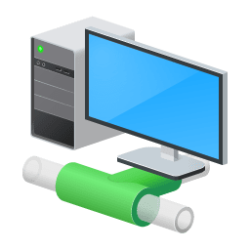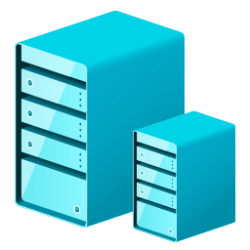This tutorial will show you how to delete one or more Hyper-V virtual machines at once in Windows 10 and Windows 11.
Hyper-V enables running virtualized computer systems on top of a physical host. These virtualized systems can be used and managed just as if they were physical computer systems, however they exist in virtualized and isolated environment. Special software called a hypervisor manages access between the virtual systems and the physical hardware resources. Virtualization enables quick deployment of computer systems, a way to quickly restore systems to a previously known good state, and the ability to migrate systems between physical hosts.
If you no longer need a Hyper-V virtual machine, you can easily delete it to remove it from the Hyper-V Manager and free up hard drive space.
When you delete a virtual machine, only the virtual machine's configuration file gets deleted. It does not delete any virtual hard drives. If the virtual machine has any checkpoints, they are deleted and merged into the virtual hard disk files after the virtual machine is deleted. You will need to manually delete these in File Explorer if wanted.
Reference:

Remove-VM (Hyper-V)
Use this topic to help manage Windows and Windows Server technologies with Windows PowerShell.
learn.microsoft.com
You must be signed in as an administrator to delete a Hyper-V virtual machine.
Contents
- Option One: Delete Hyper-V Virtual Machine(s) in Hyper-V Manager
- Option Two: Delete Specific Hyper-V Virtual Machine in PowerShell
- Option Three: Delete All Hyper-V Virtual Machines in PowerShell
1 Open Hyper-V Manager (virtmgmt.msc).
2 Select one or more virtual machines (ex: "Windows 11 Home") in the middle pane you want to delete. (see screenshot below)
3 Perform one of the following actions below to delete the virtual machine(s):
- Press the Del key.
- Click/tap on Delete in the right "Actions" pane.
- Click/tap on Action on the menu bar, and click/tap on Delete.
- Right click on the selected virtual machine(s) in the middle pane, and click/tap on Delete.
4 Click/tap on Delete to confirm. (see screenshot below)
5 You can now close Hyper-V Manager if you like.
1 Open Windows Terminal (Admin), and select Windows PowerShell.
2 Copy and paste the command below into Windows Terminal (Admin), and press Enter. (see screenshot below step 3)
Get-VM3 Make note of the virtual machine name (ex: "Windows 11 Home") you want to delete. (see screenshot below)
4 Type the command below into Windows Terminal (Admin), and press Enter. (see screenshot below)
Remove-VM "<VM Name>" -ForceSubstitute <VM Name> in the command above with the actual virtual machine name (ex: "Windows 11 Home") from step 3 you want to delete.
For example: Remove-VM "Windows 11 Home" -Force
5 You can now close Windows Terminal (Admin) if you like.
1 Open Windows Terminal (Admin), and select Windows PowerShell.
2 Copy and paste the command below into Windows Terminal (Admin), and press Enter. (see screenshot below)
Get-VM | Remove-VM -Force3 You can now close Windows Terminal (Admin) if you like.
That's it,
Shawn Brink
Last edited:












